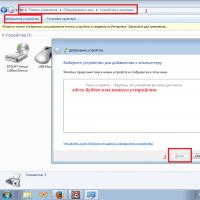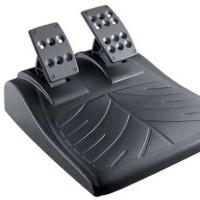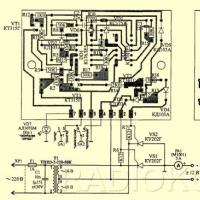Parameters of Wi-Fi equipment allowed for use in the Russian Federation. Wi-Fi, Standards Use modern technologies
At the dawn of the era of the home Internet, everyone hid the arrays of wires as best he could. They were "sewn" into the plinth, fastened along the perimeter of the wall, and packed in dust bags. In computer desks, there were even special holes for pulling a network cable. But with the popularization of Wi-Fi wireless technologies, the need to "encrypt" cables has disappeared.
A relatively new technology allows you to access the network "over the air", subject to the presence of an access point - a router or other device similar in functionality. For the first time they talked about what Wi-Fi is in 1991, when the standards were just being tested, and they gained wide popularity only closer to 2010.
What is Wi-Fi?
Wi-Fi is not the Internet as such, but a modern standard for data exchange between devices equipped with special radio modules. Wi-Fi modules are installed on the lion's share of the electronics and technology produced today. So, initially only wearable computers, mobile phones and handhelds were equipped with them, but more recently, cameras, printers and even multicooker have the ability to communicate with the global network and other devices.
An access point is a mandatory attribute for accessing the network via Wi-Fi. As usual, this role is played by a router - a device that outwardly resembles a compact box with antennas and a set of standard jacks for connecting a wired Internet. The "box" itself is connected to the Internet through a twisted pair wire, and through the antennas it "distributes" the data received from the network and transmits the data transmitted from the devices connected "over the air" to the network.
In addition to the router, you can use a laptop, mobile phone or tablet as an access point. All these devices, as well as the increasingly popular mobile routers, must be connected to the global network via a mobile connection (sim card with GPRS, 3G, 4G). The principle of receiving / transmitting data is the same as for a wired router.
What is Wi-Fi for?
The primary “household” function of wireless access is to visit sites, download files and communicate over the network without having to be tied to a specific point with wires. Every year cities are more and more "covered" with access points available to everyone, so that in the near future, if you have a device with a radio module, you can use the network in any city.
Also, radio modules can be used to organize an internal network between devices. Lenovo, for example, has already released an open access application for mobile devices that allows you to exchange any type of file between gadgets via Wi-Fi, but without the need for an Internet connection. The program creates a tunnel through which it transmits some information to the receiving side. When using the application, data exchange is ten times faster than via Bluetooth. In the same way, a smartphone can play the role of a joystick in conjunction with a game console or laptop, or take over the functions of a remote control for a Wi-Fi TV.
How do I use Wi-Fi?
To forget about the web of wires at home or in the office, you need to purchase a router. Connect the Internet access wire to the highlighted (usually yellow or white) socket and configure it according to the instructions. After that, on all devices that are equipped with a Wi-Fi module, you need to turn on the module, search for a network and connect.
Attention! The speed of Internet access through one access point is the lower, the more devices are connected to it at the same time. The speed is divided proportionally among all devices.
If your computer does not have a radio module, you can purchase one. The external radio module looks like a USB flash drive, it is also connected via a USB interface. The average cost is within $ 10.
Internet from a mobile device can be "distributed" through the "Access Point" option. Find an option in your phone or tablet settings and go through the network setup step by step.
Attention! When a mobile phone or tablet “distributes” the Internet, being an access point, it is better not to watch videos and listen to podcasts on it. The speed between the distributor and the connected device is divided according to the residual principle, and only if the Internet is not actively used on the “access point”, the connected device can load sites at normal speed.
Wi-Fi technology allows you to enter the network without being tied to an Internet cable. Any device equipped with a radio module that supports the Wi-Fi data transmission standard can be a source of wireless Internet. In this case, the signal propagation radius depends on the antenna power of the access point. Using Wi-Fi, you can not only connect to the Internet, but also transfer files and combine devices into a separate network.
WiFi 802.11 standards are developed by the IEEE (Institute of Electrical and Electronic Engineers)
IEEE 802.11 is a basic standard for Wi-Fi networks that defines a set of protocols for the lowest transfer rates.
IEEE 802.11 b- describes b O
higher transfer rates and introduces more technology restrictions. This standard was widely promoted by WECA ( Wireless Ethernet Compatibility Alliance ) and was originally called Wi-Fi .
Frequency channels in the 2.4GHz spectrum are used ().
Ratified 1999.
RF technology used: DSSS.
Coding: Barker 11 and CCK.
Modulations: DBPSK and DQPSK,
Maximum data transfer rates (transfer) in the channel: 1, 2, 5.5, 11 Mbps,
IEEE 802.11 a- describes significantly higher transfer rates than 802.11b.
Frequency channels are used in the 5GHz frequency spectrum. ProtocolNot compatible with 802.11 b.
Ratified 1999.
RF technology used: OFDM.
Coding: Convoltion Coding.
Modulations: BPSK, QPSK, 16-QAM, 64-QAM.
Maximum data transfer rates in the channel: 6, 9, 12, 18, 24, 36, 48, 54 Mbps.
IEEE 802.11 g
- describes data rates equivalent to 802.11a.
Frequency channels in the 2.4GHz spectrum are used. The protocol is compatible with 802.11b.
Ratified 2003.
RF technologies used: DSSS and OFDM.
Coding: Barker 11 and CCK.
Modulations: DBPSK and DQPSK,
Maximum data transfer rates (transfer) in the channel:
- 1, 2, 5.5, 11 Mbps on DSSS and
- 6, 9, 12, 18, 24, 36, 48, 54 Mbps on OFDM.
IEEE
802.11n- the most advanced commercial WiFi standard, currently officially approved for import and use on the territory of the Russian Federation (802.11ac is still in the process of being developed by the regulator). 802.11n uses frequency channels in the WiFi 2.4GHz and 5GHz frequency spectra. Compatible with 11b / 11 a / 11 g ... Although it is recommended to build networks with a focus only on 802.11n, since requires configuring special protection modes for backward compatibility with legacy standards. This leads to a large increase in signaling information anda significant decrease in the available useful performance of the radio interface. Actually, even one WiFi 802.11g or 802.11b client will require special configuration of the entire network and its immediate significant degradation in terms of aggregated performance.
The WiFi 802.11n standard itself was released on September 11, 2009.
Supported WiFi frequency channels are 20MHz and 40MHz (2x20MHz).
RF technology used: OFDM.
Uses OFDM MIMO (Multiple Input Multiple Output) technology up to 4x4 (4xTransmitter and 4xReceiver). In this case, at least 2xTransmitters per Access Point and 1xTransmitter per user device.
Examples of possible MCS (Modulation & Coding Scheme) for 802.11n, as well as the maximum theoretical data transfer rates (transfers) in the radio channel are presented in the following table:
Here SGI is the guard interval between frames.
Spatial Streams is the number of spatial streams.
Type is the type of modulation.
Data Rate is the maximum theoretical data transfer rate in the radio channel in Mbps.
It is important to emphasize that the indicated speeds correspond to the concept of channel rate and are the limit value using this set of technologies within the described standard (in fact, these values, as you probably noticed, are also written by manufacturers on the boxes of home WiFi devices in stores). But in real life, these values are not achievable due to the specifics of the WiFi 802.11 technology itself. For example, "political correctness" in terms of providing CSMA / CA is strongly influenced here (WiFi devices constantly listen to the air and cannot transmit if the transmission medium is busy), the need to confirm each unicast frame, the half-duplex nature of all WiFi standards and only 802.11ac / Wave-2 can this is to start bypassing with, etc. Therefore, the practical efficiency of the outdated 802.11 b / g / a standards never exceeds 50% in ideal conditions (for example, for 802.11g, the maximum speed per subscriber is usually not higher than 22Mb / s), and for 802.11n efficiency can be up to 60%. If the network operates in a protected mode, which often fails due to the mixed presence of various WiFi chips on various devices in the network, then even the indicated relative efficiency can drop by a factor of 2-3. This applies, for example, a mix of Wi-Fi devices with 802.11b, 802.11g chips in a network with WiFi 802.11g access points or WiFi 802.11g / 802.11b devices in a network with WiFi 802.11n access points, etc. More about ...
In addition to the main WiFi 802.11a, b, g, n standards, there are additional standards and are used to implement various service functions:
. 802.11d... To adapt various WiFi devices to the specific conditions of the country. Within the regulatory field of each state, the ranges are often different and can be different even depending on the geographic location. The WiFi IEEE 802.11d standard allows frequency band regulation in devices from different manufacturers using special options introduced in the media access control protocols.
. 802.11e... Describes the QoS quality classes for the transfer of various media files and, in general, various media content. Adaptation of the MAC layer for 802.11e, determines the quality, for example, of the simultaneous transmission of sound and image.
. 802.11f... It is aimed at unifying the parameters of the Access Points of the Wi-Fi standard from various manufacturers. The standard allows the user to work with different networks when moving between the coverage areas of separate networks.
. 802.11h... It is used to prevent creating problems for meteorological and military radars by dynamically reducing the radiated power of Wi-Fi equipment or dynamically switching to another frequency channel when a trigger signal is detected (in most European countries, ground tracking stations for meteorological and communication satellites, as well as military radars work in ranges close to 5 MHz). This standard is a necessary ETSI requirement for equipment approved for use in the territory of the European Union.
. 802.11i... The first versions of the WiFi 802.11 standards used the WEP algorithm to secure Wi-Fi networks. It was assumed that this method could provide privacy and protect the transmitted data of authorized users of the wireless network from eavesdropping, which can now be breached in just a few minutes. Therefore, in the 802.11i standard, new methods of protecting Wi-Fi networks have been developed, implemented both at the physical and software levels. Currently, it is recommended to use Wi-Fi Protected Access (WPA) algorithms to organize a security system in Wi-Fi 802.11 networks. They also provide interoperability between wireless devices of various standards and modifications. WPA protocols use the enhanced RC4 encryption scheme and a mandatory authentication method using EAP. The stability and security of modern Wi-Fi networks is determined by privacy verification protocols and data encryption (RSNA, TKIP, CCMP, AES). The most recommended approach is to use WPA2 with AES encryption (and don't forget about 802.1x with highly desirable tunneling mechanisms like EAP-TLS, TTLS, etc.). ...
. 802.11k... This standard is actually aimed at implementing load balancing in the radio subsystem of a Wi-Fi network. Typically, in a wireless LAN, the subscriber unit usually connects to the access point that provides the strongest signal. This often leads to network congestion at one point, when many users connect to one Access Point at once. To control such situations in the 802.11k standard, a mechanism is proposed that limits the number of subscribers connected to one Access Point, and makes it possible to create conditions under which new users will join another AP even though the signal from it is weaker. In this case, the aggregated network bandwidth is increased due to the more efficient use of resources.
. 802.11m... Corrections and corrections for the entire 802.11 group of standards are combined and summarized in a separate document collectively called 802.11m. The first release of 802.11m was in 2007, then in 2011, and so on.
. 802.11p... Determines the interaction of Wi-Fi equipment moving at a speed of up to 200 km / h past fixed WiFi Hotspots, remote at a distance of up to 1 km. Part of the Wireless Access in Vehicular Environment (WAVE) standard. The WAVE standards define an architecture and an additional set of service functions and interfaces that provide a secure radio communication mechanism between moving vehicles. These standards are developed for applications such as, for example, traffic management, traffic safety control, automated payment collection, vehicle navigation and routing, etc.
. 802.11s... A standard for the implementation of mesh networks (), where any device can serve as both a router and an access point. If the nearest access point is congested, data is redirected to the nearest unloaded node. In this case, a packet of data is transferred (packet transfer) from one node to another until it reaches its final destination. This standard introduces new protocols at the MAC and PHY layers that support broadcast and multicast transmission (transfer), as well as unicast delivery over a self-configuring Wi-Fi access point system. For this purpose, the standard introduces a four-address frame format. Examples of implementation of WiFi Mesh networks:,.
. 802.11t... The standard was created to institutionalize the testing process of IEEE 802.11 standard solutions. Testing methods, methods of measurement and treatment of results (treatment), requirements for test equipment are described.
. 802.11u... Defines the procedures for the interaction of Wi-Fi networks with external networks. The standard should define access protocols, priority protocols and prohibitions on working with external networks. At the moment, a large movement has formed around this standard both in terms of developing solutions - Hotspot 2.0, and in terms of organizing inter-network roaming - a group of interested operators has been created and is growing, which jointly solve roaming issues for their Wi-Fi networks in dialogue (WBA Alliance ). Read more about Hotspot 2.0 in our articles: , .
. 802.11v... The standard should be developed amendments aimed at improving the network management systems of the IEEE 802.11 standard. Modernization at the MAC and PHY levels should allow centralizing and streamlining the configuration of client devices connected to the network.
. 802.11y... An additional communication standard for the 3.65-3.70 GHz frequency range. Designed for the latest generation devices operating with external antennas at speeds up to 54 Mbit / s at a distance of up to 5 km in open space. The standard is not fully completed.
802.11w... Defines methods and procedures for improving the protection and security of the Media Access Control (MAC) layer. The protocols of the standard structure a system for controlling the integrity of data, the authenticity of their source, the prohibition of unauthorized reproduction and copying, data confidentiality and other means of protection. The standard introduces management frame protection (MFP: Management Frame Protection), and additional security measures allow you to neutralize external attacks, such as, for example, DoS. A little more on MFP here:,. In addition, these measures will provide security for the most sensitive network information that will be transmitted over networks with support for IEEE 802.11r, k, y.
802.11ac.
A new WiFi standard that only works in the 5GHz frequency band and provides significantly O
Higher speeds for both an individual WiFi client and a WiFi Hotspot. For more details, see our article.
The resource is constantly updated! To receive announcements when new thematic articles are released or new materials appear on the site, we suggest subscribing.
Join our group on
Wi-Fi is the most popular way to connect to the internet today. This became possible due to the good characteristics of this protocol, ease of connection and the availability of a wide range of inexpensive equipment.
However, this interface has some drawbacks. Many users are faced with incomprehensible disconnections, errors, or low data rates. In this case, do not rush to immediately call the support service or call the repair team. You can deal with many of the troubles with your home Wi-Fi network on your own.
1. Reboot the router
Yes, this is exactly what it is advised to do when contacting support. And absolutely right.
A modern router is a complex device, in the operation of the software of which errors may appear over time. The easiest and fastest way to get rid of them is to reboot the hardware. Some routers allow you to do this automatically on a schedule, you just need to look for the appropriate option in the settings.
2. Install alternative firmware
Alternative firmware is written by enthusiasts to eliminate the shortcomings of proprietary software. The most famous project of this kind is DD-WRT. This firmware supports a wide range of hardware and is completely free.
Installing a third-party firmware allows not only to improve network performance, but also in some cases to activate previously unavailable functions of the device. However, it is worth considering that the process of flashing and subsequent configuration of the equipment will require time and special knowledge from you.
3. Use a Wi-Fi repeater
If devices in any part of the house constantly lose their connection to the Internet, then the signal of the router is too weak here. The problem can be solved by using a special repeater, which are also called repeaters, or repeaters.
The main task of the repeater is to strengthen the signal of the existing Wi-Fi network. These compact and inexpensive devices are manufactured by almost all popular network equipment manufacturers, as well as dozens of obscure Chinese firms.
4. Design a signal amplifier
Using a Wi-Fi repeater may not help out in all cases. Sometimes, to amplify the signal of the router, you have to resort to other, more artisanal methods. For example, you can design a custom reflector from or for CDs.
But if you need something really powerful, then try to assemble an antenna from scrap materials to expand your "home zone" of the wireless Internet, which we wrote about in this one.
5. Control application access to the Internet
If someone in your house is constantly watching streaming video, playing online games, downloading large files, then this can significantly slow down the network. Pay special attention to torrent clients. Some of them are configured in such a way that they automatically start at system startup and continue downloading and distributing data in the background. A separate pain is computer games that quietly download multi-gigabyte updates and add-ons.
6. Close access to unauthorized persons
By default, the manufacturer installs the same well-known logins and passwords on all its routers. Each user must independently change them to protect their network from unauthorized access. However, unfortunately, not everyone does it.
If you do not want your neighbors to use your wireless network, thereby interfering with you, then you need to configure the router in detail. You can read how to do this in our guide "".
7. Get rid of the clutter
Signal quality over a Wi-Fi network can be affected by many different factors, including interference from phones, microwave ovens, and so on. You can get rid of them only by placing the router and the source of interference as far away as possible. A special WiFi Analyzer application that can display signal strength in real time will help to cope with this task.

8. Tune into a free channel
In modern apartment buildings, multiple wireless access points operate simultaneously, occupying all available channels. As a result, some of them have to share the same channel, which leads to a mutual decrease in the speed and stability of communication.
9. Find a new location for the router
The unsuccessful location of the router in the apartment can also affect the quality of the connection. If your workplace is separated from the connection point by several concrete walls, then you should not be surprised that the Internet is constantly slowing down.
You can choose the optimal place for a router only by experience, moving it around the apartment and measuring the signal quality. The diagnostic utility NetSpot and our instruction, which is called "", will help to do this.
10. Use modern technology
One of the best ways to make your wireless network as fast, stable and secure as possible is to use modern hardware.
Communication standards are constantly evolving and improving. New implementations of this protocol provide faster connection speeds, less errors and less susceptibility to interference.
However, to use them, you need the appropriate equipment. Therefore, the most radical and expensive method to improve the quality of a home network is to buy a modern dual-band router from a well-known manufacturer.
Most of the urban population uses Internet access, and many say we have wifi at home, we go through it to sites and we do not need an Internet connection. From this we can conclude that such people, unfortunately, do not understand what they are talking about.
In this article I will tell you in detail what wi-fi is and will eliminate the "gap" in the knowledge of such people.
What is Wi-fi?
I am glad to welcome you, dear reader, in this article we will deal with the modern concept - "Internet connection via wi-fi". A huge number of users use such a connection, but they do not always understand what it is all about, and even more so how wi-fi works.
Wi-fi is the ability to transfer data wirelessly and that's it ... Never confuse the Internet and Wi-Fi - these are completely different processes and different equipment. You can easily distinguish them if you carefully read the article to the end.
Under the concept of the Internet can be represented as a connection, the ability to exit, access to any sites. And if this Internet connection is passed through special equipment, you can get a so-called wi-fi network, which will transmit the same Internet, but without wires and with the ability to connect several devices to it at once, for example, simultaneously "deliver" your Internet access to mobile and laptop.
That is, Wi-Fi is a network that distributes access to the Internet without wires, via radio channels. Who cares, it works on the basis of IEEE 802.11 standards, but the network itself does not provide access to the Internet. Let's figure out how to make it work?
Moving on to the interesting and very important, understanding how Wi-Fi networks work, you can correctly formulate your thoughts about Internet connections. So, in order for you to have a Wi-fi network at home, you must first connect the Internet to your home.
After that, the Internet cable must be connected to special equipment - a router.
A router is a device that receives signals from the Internet, converts them into a so-called wi-fi network and transmits them to specific devices (phone, computer, TV).
How to connect Wi-fi at home?
As I said earlier, the first thing to do is to bring the Internet to your home, apartment, office, the process is not complicated, you need to find out which providers work with your home, call them or visit an office where they will accept an application for laying an Internet cable in your apartment.
As a rule, you will be given several dates to choose from, choose the most convenient for yourself, when you can be at home, the master will arrive at the appointed time and lead the Internet cable to the place you need.
By the way, they don’t take money for laying the cable, the company you have chosen does it at its own expense, you pay only for the selected Internet connection tariff, usually from 300 to 1000 rubles per month.
The monthly fee (tariff) will depend on the connection speed you choose.
For comfortable access, choose a speed of 30 Mb / s, about 400-500 rubles / month.
After the cable has been laid, you can already connect it to the computer and use the Internet, but our goal is to create a Wi-Fi network, so let's move on. You need to purchase a router (some companies provide their routers), it is to it that you then connect the Internet cable, after which the router will create an active wi-fi network, and already you can connect to it without any wires, even from a laptop, even from a phone, and here it is comfortable Internet access from anywhere in the apartment or house.
Tip 1: When discussing the conditions for connecting an Internet cable, ask which router is better for you, because the choice in stores nowadays is quite large. Getting the right advice on getting the right router will save you money and time.
Tip 2: When connecting, the router will need to be configured (once), if you do not have the slightest idea how this is done, then I recommend asking the wizard who will come to lay the Internet cable. Let him set everything up for you right away (they may require a separate setup fee, about 500 rubles)
Tip 3: Take care of a secure connection in advance, install an antivirus on all computers from which you will access the Internet.
An alternative option, if your house or apartment for some reason is not serviced by one of the provider companies, usually residents of settlements, villages, country parks face this, well, there is no way to lay the cable there yet.
It is necessary to find out which of the telecom operators (mts, beeline, megaphone) normally catches on this territory. After that, visit the office of one of these companies and buy a modem that will provide Internet access, and for the modems, separate routers are sold that can convert the signal from the modem to a wi-fi network.
By the way, modems with an already built-in Wi-Fi module are now actively developing, perhaps you can find one for yourself - this will simplify the connection conditions several times.
In the article, we will analyze the advantages and disadvantages of Wi-Fi 5 GHz and 2.4 GHz, so that you can understand what kind of technology it is and what to choose. There are a lot of Wi-Fi standards and technologies, the names of which are taken from the letters of the Latin alphabet: a, b, g, n, ac. The first four are the most common and are found in most Android devices, and the theoretical bandwidth can range from 11 to 450 Mbps. Whereas (ac) is just beginning to be implemented, but the speed can reach up to 1300 Mbps.
In practice, the download speed on the device can rarely exceed more than 25 Mbps, which is a consequence of the limitation of the router and the resulting interference from neighboring access points.
Pros and cons of 2.4GHz Wi-Fi
Most home routers are inexpensive and use the most common 2.4 GHz frequency (b, g, n). As a result, the network is very overloaded, because it has three separate channels, and when transferring data, only one is used, which is also used by neighbors. A number of household appliances, such as a microwave oven or telephone, operate in this frequency range, which can create additional interference.
Because of this, there are delays in the transmission of packet data, especially at long distances and a relatively low speed. At the same time, there are several key advantages of it:

Pros and cons of 5GHz Wi-Fi
Frequency 5 GHz (a, ac) is almost never used for data transmission. Standard (a) is outdated, and (ac) is only now being introduced into new smartphones and tablets, so many users may simply not know about its capabilities, since this requires a router that supports this frequency. Fortunately, such routers are backward compatible, and due to the two antennas, distribution can occur at 2.4 GHz and 5 GHz.
The number of channels used in the 5 GHz range is 19, due to which the data transmission increases significantly, and the air is much freer. As an example, the number of available access points (left 5 GHz, right 2.4 GHz):
At the same time, despite its low network congestion and high bandwidth, there are several potential drawbacks. First of all, the coverage area is much smaller, so using Wi-Fi internet in the far corner of the next room can be complicated. The second is foreign objects that can interfere with the signal path, as a result, the signal, passing through the wall, is significantly weakened.
For a stable and uninterrupted network, especially if the device is in direct line of sight, it is better to use the 5 GHz frequency. If the distance to the router is too long and is accompanied by obstacles in the form of several walls, then 2.4 GHz. In the settings, you can specify automatic range change and not think about manual switching. The only condition is to have an appropriate router, and the smartphone or tablet used must support the required frequency.
Was the article helpful to you?
Rate it - support the project!
 X360ce - connect any joystick (instructions for the old version) Install the joystick on the pc from xbox 360
X360ce - connect any joystick (instructions for the old version) Install the joystick on the pc from xbox 360 Recovering contacts on Android
Recovering contacts on Android Pizza empire promo code october
Pizza empire promo code october Why the steering wheel does not connect to the computer
Why the steering wheel does not connect to the computer How to connect a gaming wheel to a computer
How to connect a gaming wheel to a computer How to keep a personal diary and what is the use of it
How to keep a personal diary and what is the use of it Charger "Cedar": description, instructions
Charger "Cedar": description, instructions